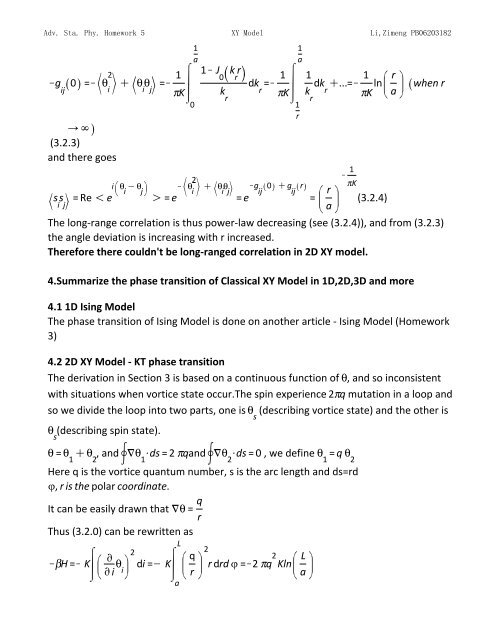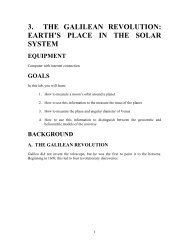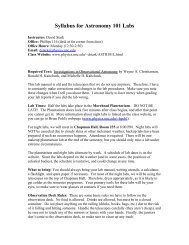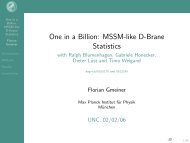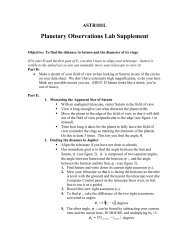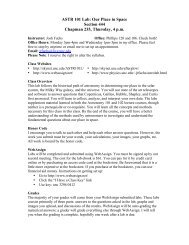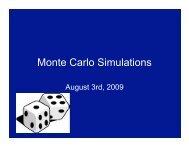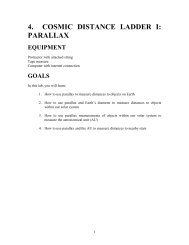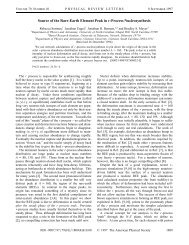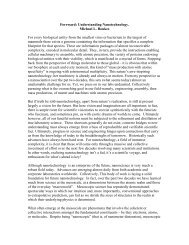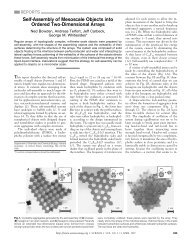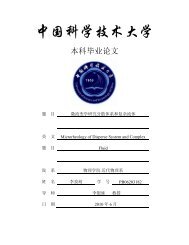Topics in Statistic Mechanics
Topics in Statistic Mechanics
Topics in Statistic Mechanics
Create successful ePaper yourself
Turn your PDF publications into a flip-book with our unique Google optimized e-Paper software.
Adv. Sta. Phy. Homework 5 XY Model Li,Zimeng PB06203182<br />
(3.2.3)<br />
and there goes<br />
(3.2.4)<br />
The long-range correlation is thus power-law decreas<strong>in</strong>g (see (3.2.4)), and from (3.2.3)<br />
the angle deviation is <strong>in</strong>creas<strong>in</strong>g with r <strong>in</strong>creased.<br />
Therefore there couldn't be long-ranged correlation <strong>in</strong> 2D XY model.<br />
4.Summarize the phase transition of Classical XY Model <strong>in</strong> 1D,2D,3D and more<br />
4.1 1D Is<strong>in</strong>g Model<br />
The phase transition of Is<strong>in</strong>g Model is done on another article - Is<strong>in</strong>g Model (Homework<br />
3)<br />
4.2 2D XY Model - KT phase transition<br />
The derivation <strong>in</strong> Section 3 is based on a cont<strong>in</strong>uous function of , and so <strong>in</strong>consistent<br />
with situations when vortice state occur.The sp<strong>in</strong> experience mutation <strong>in</strong> a loop and<br />
so we divide the loop <strong>in</strong>to two parts, one is (describ<strong>in</strong>g vortice state) and the other is<br />
(describ<strong>in</strong>g sp<strong>in</strong> state).<br />
, and and , we def<strong>in</strong>e<br />
Here q is the vortice quantum number, s is the arc length and ds=rd<br />
It can be easily drawn that<br />
Thus (3.2.0) can be rewritten as


